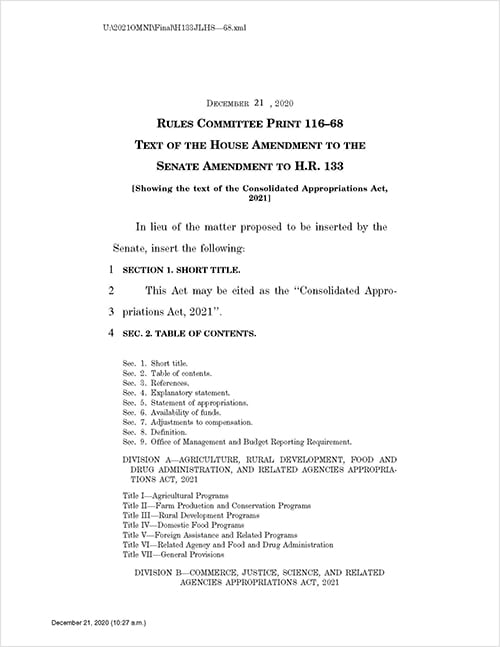New Stimulus Bill Puts K-12 Education on the Road to Recovery
Education Domain Blog
In a year fraught with hardship and trauma for school communities nationwide, we’re optimistic to see Congress putting a deposit on stabilizing and securing schools with the passage of $900 billion in the federal COVID relief package passed late Sunday evening.
The bipartisan effort, signed by the president on Sunday, December 28, 2020, will provide $54.3 billion in funding to K-12 schools to address the disruptions caused by COVID-19. These include:
- ameliorating learning losses for students disproportionately impacted by COVID-19, including through differentiated instruction;
- expanding access to online learning, including during the summer months;
- providing mental health services;
- improving school facilities, such as enhanced cleaning, improved ventilation, and safely enabling in-person instruction where possible;
- acquiring and administering COVID tests and personal protective equipment; and
- accessing and distributing vaccines.
The $54.3 billion figure is roughly $41 billion more than what was provided under the CARES Act in March. Total education funding in the latest relief package tops $82 billion, including funding dedicated to a governors’ fund ($4.1 billion) that must be largely earmarked for K-12 (public and private) schools and postsecondary institutions. The remaining $23 billion COVID-19 education aid will support higher education institutions.

Separately, the bill provides $7 billion in emergency broadband connectivity support, $3.2 billion of which will directly benefit low-income households and expand rural access and infrastructure. Another $13 billion is slated for nutrition assistance.
Additionally, a small contingency of bipartisan lawmakers led an effort to include a set of notable higher education provisions in the all-encompassing funding package, including restoring Pell grants for incarcerated individuals, simplifying the FAFSA application, and forgiving $1.3 billion in outstanding capital finance debt to Historically Black Colleges and Universities.
We are encouraged that Congress is taking a critical step toward addressing the losses caused by the pandemic; however, K-12 students, schools, and administrators remain imperiled by COVID-19. Much more must be done to transform America’s education system into one that honors quality, equity, and local communities.
For example, federal policy action could support the continued expansion of broadband infrastructure and increased access to Wi-Fi in schools and homes by increasing funding for the E-Rate and Lifeline programs. Nearly 17 million students are learning without home internet access. In addition, without additional funding to fill state and local budget gaps, prolonged economic recovery could be visited upon schools and could result in teacher layoffs, exacerbating the opportunity gaps throughout the country. The current relief aid is conditioned upon states agreeing to maintain a certain level of education funding, but states can waive this requirement if they experience severe economic declines. Moreover, the federal budget is the locus of change to ensure that state budget shortfalls don’t disproportionately impact low-income, rural, Black and Brown, and special needs students.
We look forward to working with the incoming administration and new Congress to better prepare our students—especially historically disinvested youth—for future success in our ever-changing world. There is great optimism among schools, districts, and communities, and our partners, that we should leverage this moment in time to make our education system better than it was before the pandemic. We look forward to supporting policy actions at the federal and state level, buttressed by adequate investments that support educational equity.